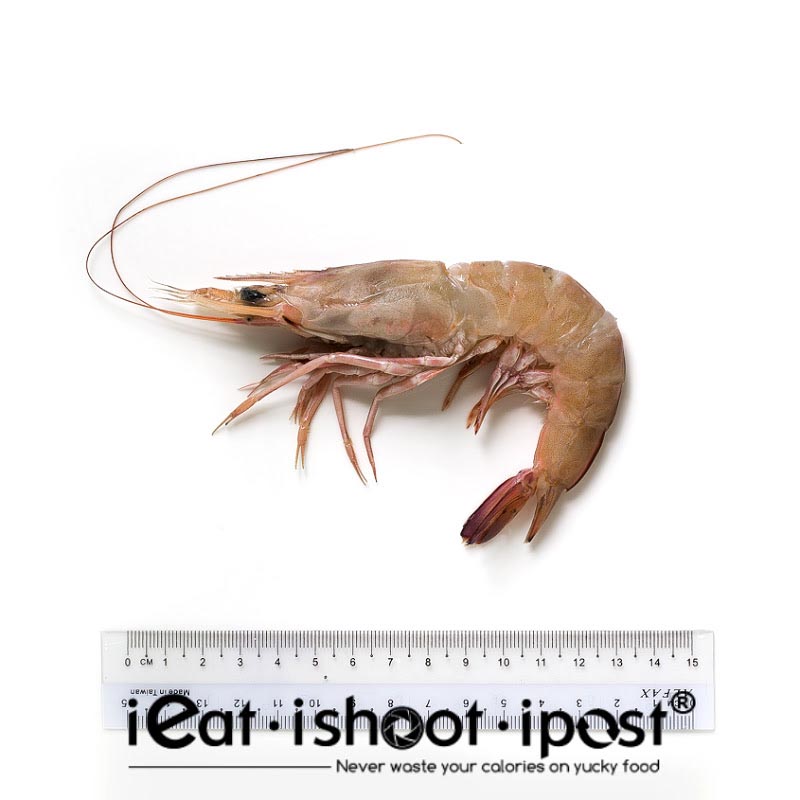
Metapenaeus ensis
Greasyback shrimp
Sua Lor – Ang Bueh 沙卢 (lit Hut in the sand) – 红尾 (red tail)
I first heard of Sua Lor prawns when I spoke to the uncle at Che Jian Fried Hokkien Mee at Chomp Chomp. He told me that he only uses wild caught Sua Lor for his Hokkien Mee as they are the traditional and still the best prawns for making the stock for Fried Hokkien Mee. Lots of stalls nowadays use farmed prawns (L. vannamai) because Sua Lors are not always as easily available.
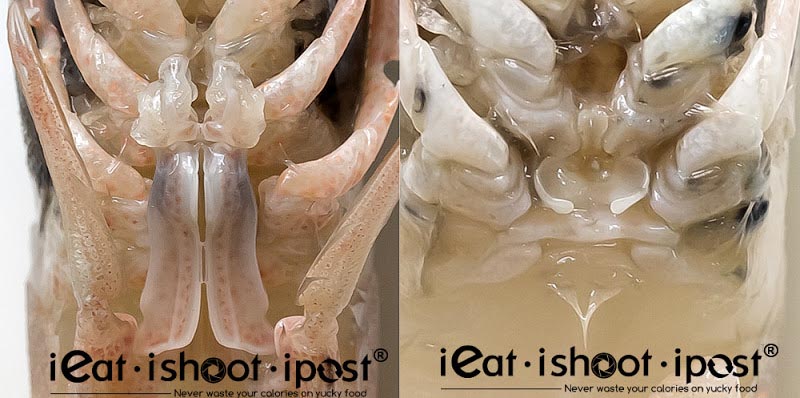
Petasma and Thelycum of Metapenaeus ensis
Sua Lors are favoured by many local prawn fanciers because of their strong prawny flavour and tender texture. The difference between a Sua Lor and a Ang Kah (Indian White) is immediately evident even to the untrained palate. They are also the favoured prawn for making fried prawn cakes and prawn rolls (hae zhor). Because of their rough and thick shells, they are usually shelled before using. Their thick shells do make them great to be grilled whole as it helps keep the moisture in and it is easy to de-shell. Another reason that they are usually shelled before serving is that the head of the prawn turns black quickly. This process is called melanosis and Sua Lors are particular prone to it, especially the ones at the wet market where they don’t add chemicals preservatives (bisulfites) to prolong their shelf life.
The most common type of Sua Lor are the red tail ones which are called greasyback shrimps (Metapenaeus ensis). You seldom hear them being called by their English name as they are simply known as Sua Lors locally. In Hokkien, Sua Lor 沙卢 literally means “Sand Hut” which refers to the fact that these prawns usually burrow themselves in the sand.
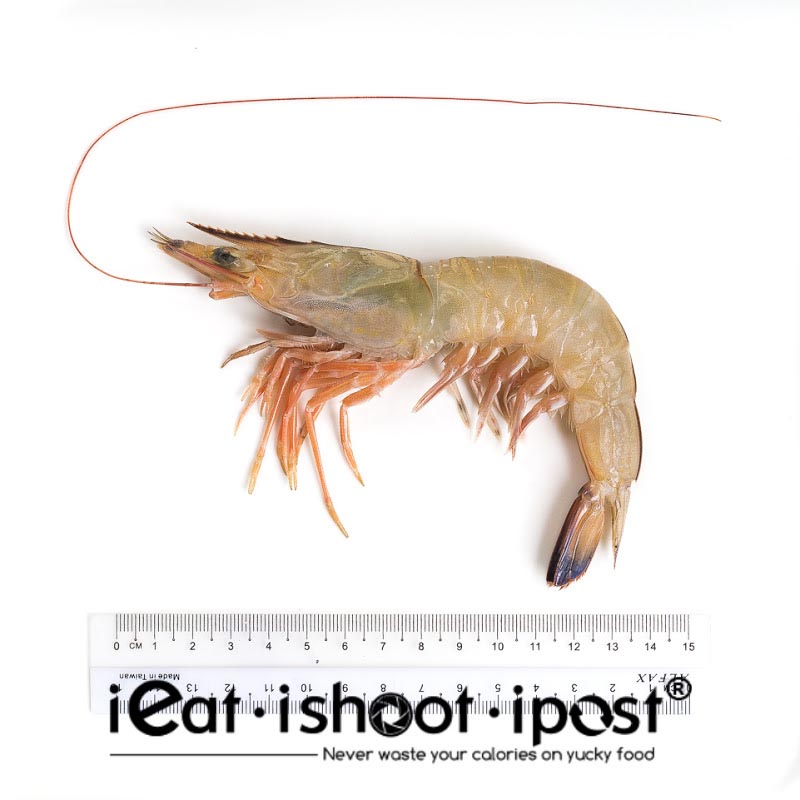
Metapenaeus intermedius
Common name: Middle Prawn
Local Name: Sua Lor – Lum Bueh 沙卢- 蓝尾 (blue tail)
I am featuring three different types of Sua Lor in this post. They all belong to the Metapenaeus family. One of the characteristic of this the Metapenaeus family is the lack of teeth at the bottom edge of the rostrum. This family has very distinctive sexual organs which are key to correctly identifying them.
The two Sua Lors that are most commonly found at the wet markets are the red tail Greasybacks (M. ensis) and the blue tail Middle Prawn (M intermedius). Between the two, the blue tails are favoured for their better flavour. You can easily recognize them by the purplish blue tips on the tails.
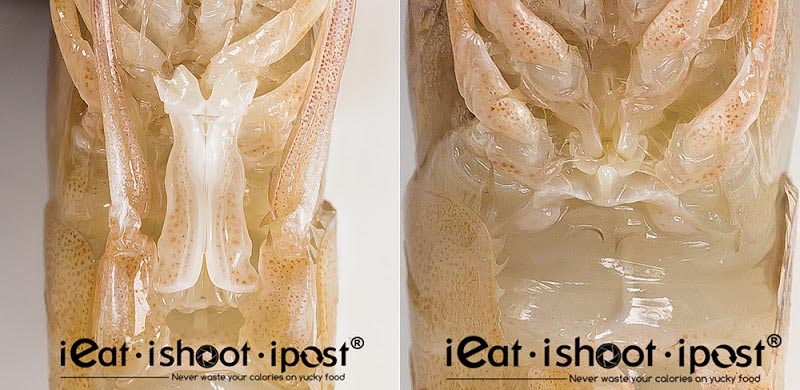
Sexual Organs of Metapenaeus intermedius
It is not always easy to get really fresh ones and so when I see them I am always be tempted to buy some. The best ones I bought were from Lor Ah Soo wet market stall no. 2-3. This stall is quite famous for its seafood and whenever they are opened, they would be thronged by the crowds. I managed to buy some really wonderful big sized Lum Buehs (Middle Prawns) from them for $13/kg.
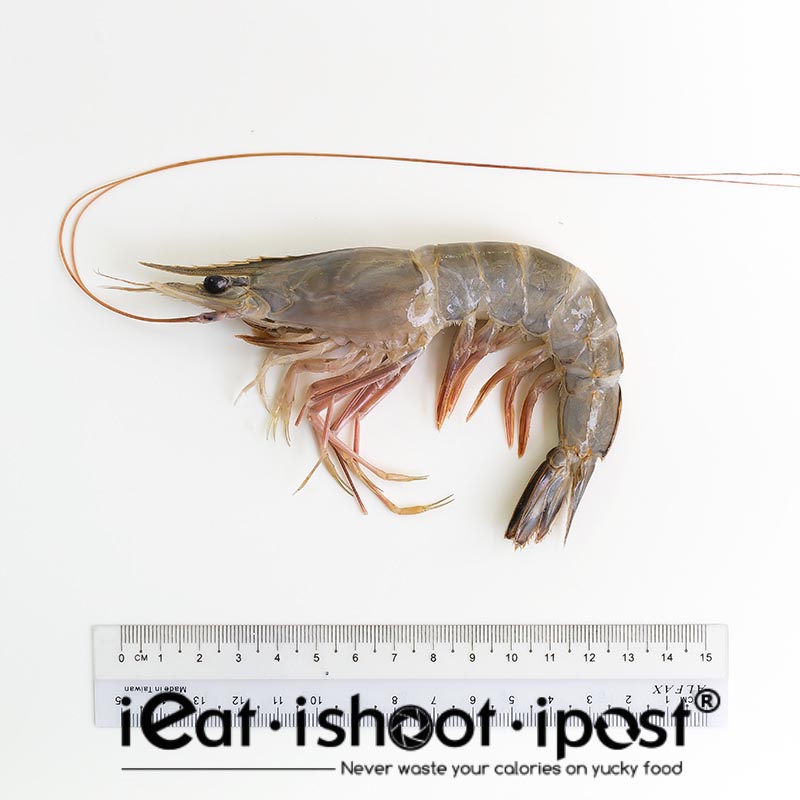
Female Jinga Prawn
Metapenaeus affinis
Common Name: Jinga prawns
Local name: Sua Lor 沙卢
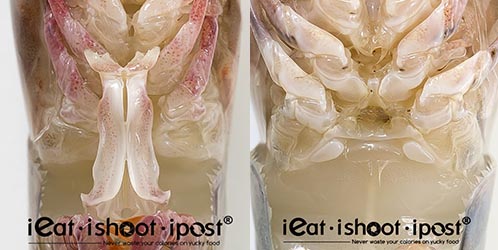
Sexual Organs of M affinis
Jinga prawns are not as readily available as the greasyback or the middle prawns. I spotted them at the Ghim Moh wet market. The fish monger told me that they are found mainly in brackish water.
Unlike the greasyback and the middle prawns, these Jinga prawns are greyish in colour. I have only come across them once so I am not sure if that is their usual colour or if there are others that come in shades of brown.
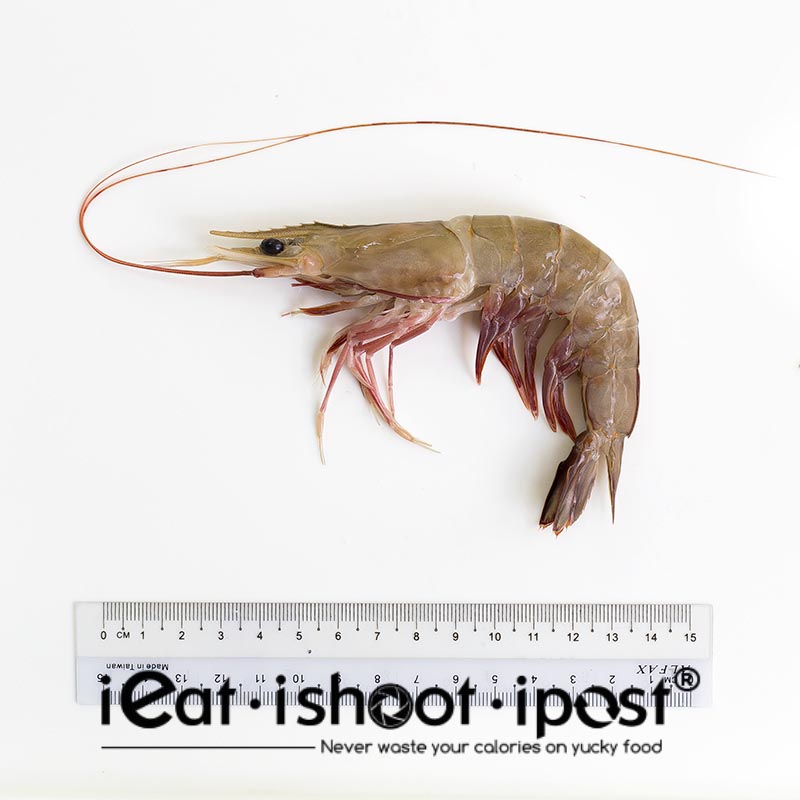
Male Jinga (M affinis)
Unlike a lot of the other prawns which I have featured so far, the male and female Jinga actually looks quite different. The male Jinga as a distinctive head that makes it look as if it has a neck just behind the rostrum.
In terms of taste, I haven’t tasted them enough to tell you if they are really superior, but they are quite similar to the other Sua Lor.
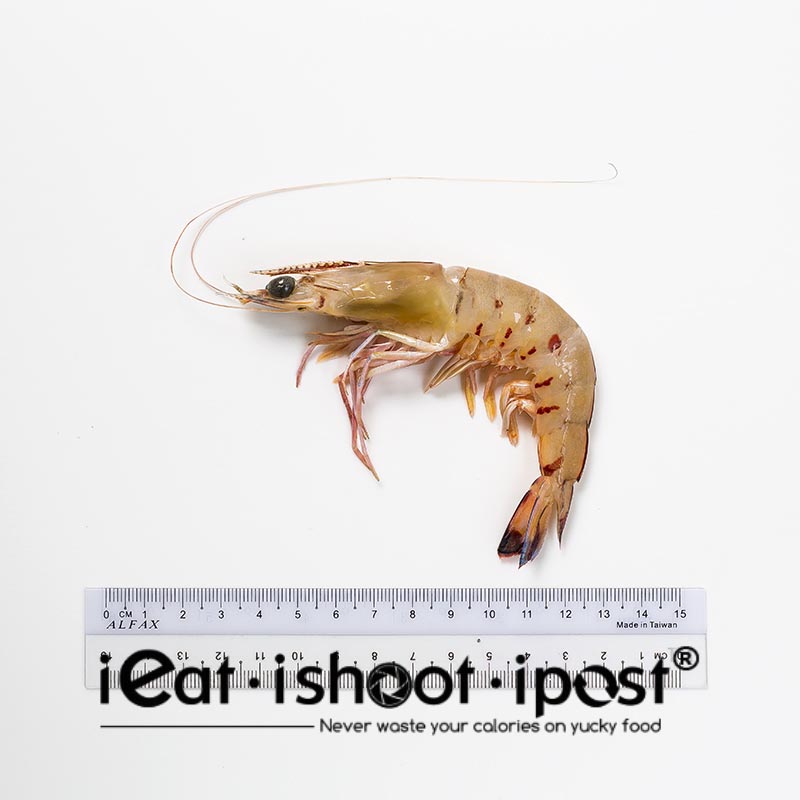
Melicertus latisulcatus
Common name: Western King Prawn
Local name: Sua Beh 沙马, (Sand horse) Lum Bueh 蓝尾 (blue tail)
One of the most handsome looking prawns that you can buy from the wet markets are the Western King Prawn which are fished off our local waters. Like the Sua Lor, they are taken from the sandy bottoms hence their local name, Sua Beh 沙马 (Sand horse) However, they don’t have the hard and rough shell of the Sua Lor. They are more flavourful than Ang Kahs but not as much as the Sua Lor and the meat is bouncy, although not as much as the Ang Kah.
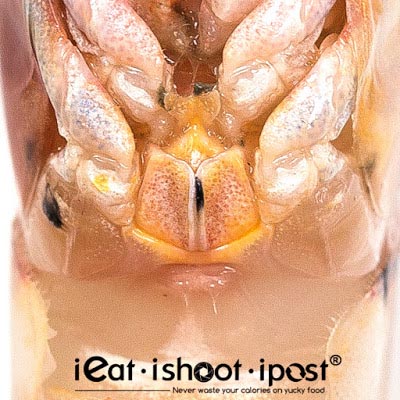
Thelycum of Western King Prawn
King prawns are not called “King” because of their size. They are usually middle sized prawns although sometimes you may come across pretty large specimens.
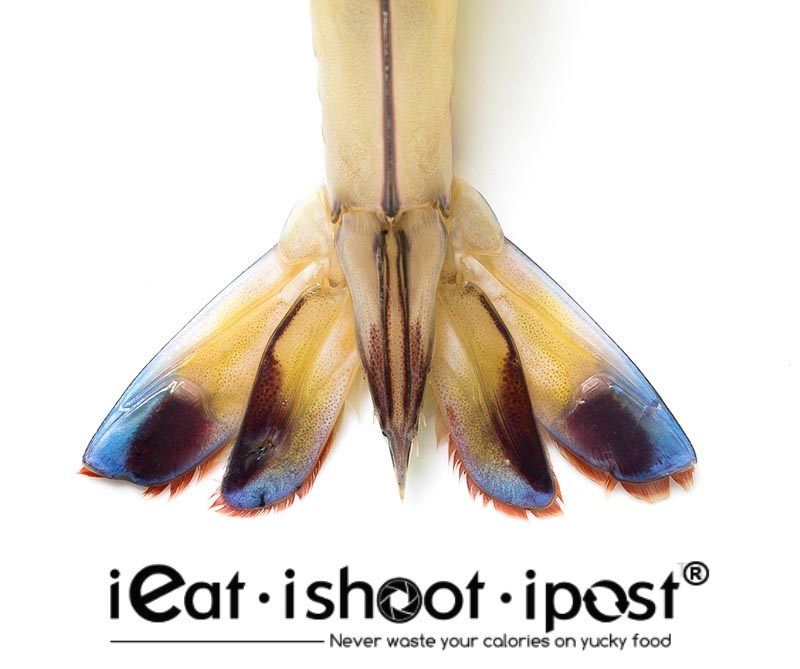
Bright blue tips of the tail of the Western King.
They are easily recognized by the four or five red spots on their abdomen and the beautiful iridescent blue tips on the tail. Both the Western King and the Middle Prawns are called Lum Bueh 蓝尾 at the market, but one can easily tell them apart. The blue tips of the Western King are bright blue while those of the Middle Prawn are a dull blue.
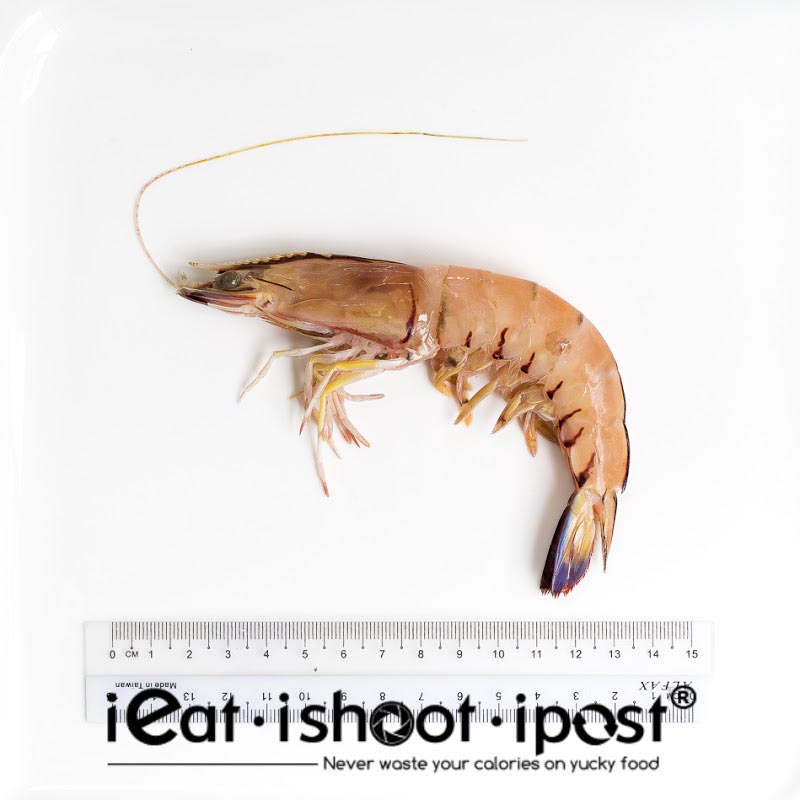
Melicertus longistylus
Common name: Red Spot King Prawn
Local name: Sua Beh 沙马, Lum Bueh 蓝尾 (blue tail)
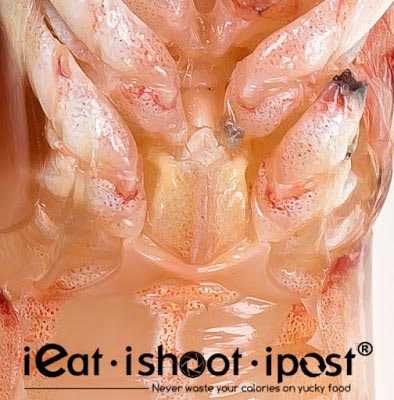
Occasionally, one might find the Red Spot King prawn amongst the Western Kings. These prawns have only one large red spot on the 3rd segment of its abdomen. They are differentiated from the Western kings by their sexual organs and also by the grooves on the carapace. Tastewise, they are similar to the Western Kings, so accurate identification is only academic.
King prawns are very versatile and are excellent for BBQ, steaming or tempura. I have included a unique Keropok Prawns recipe in the video below using some large Western King Prawns which I bought from Lor Ah Soo market. I substituted breadcrumbs with crushed prawn keropok because I wanted to add the prawny flavour of the shell back onto the prawn.
Keropok Prawn recipe
Conclusion
Sua Lors are really tasty prawns which is not too expensive! The only problem is that they turn black really quickly. Western Kings keep better and are some of the most beautiful prawns around. They look fabulous when served as prawns for steamboat with their bright blue tail and red spotted abdomen. These prawns are only available at your local wet market. I seldom see them at the local supermarkets. So do plan a visit soon to your local market and discover the fantastic fresh local seafood there!
Other posts in the series:
Part 1: The Striped Prawns
Part 2: The Coloured Prawns
Acknowledgements
I wish to thank the following experts for helping me with the identification of the prawns:
1. Prof Tin Yam Chan, Institute of Marine Biology of the National Taiwan Ocean University
2. Ken Loon, The Naked Finn





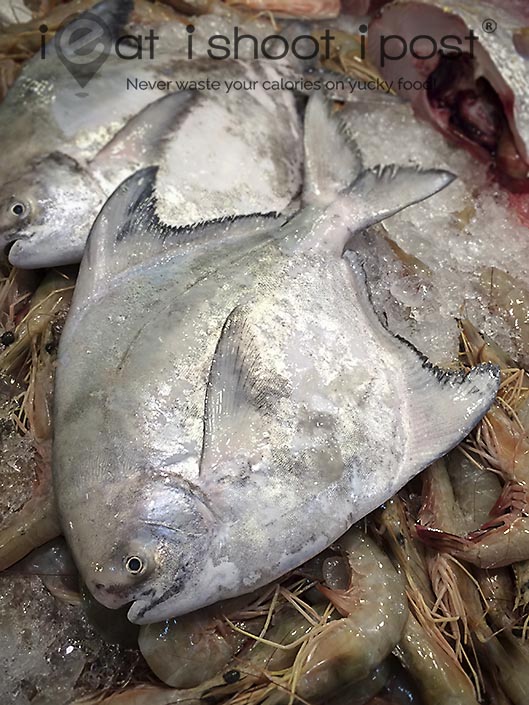
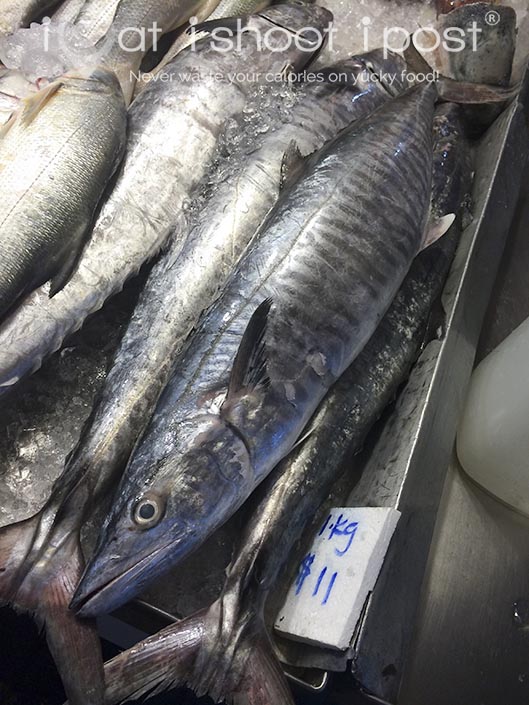
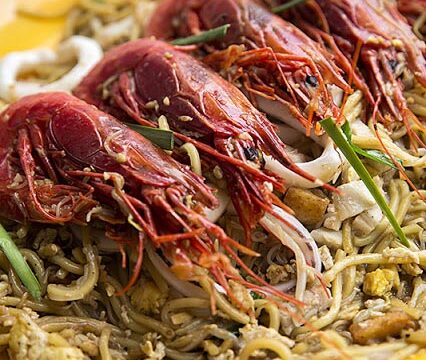




prawn rolls is not Ngor Hiang but hei chor
Ah yes, thanks for spotting that!